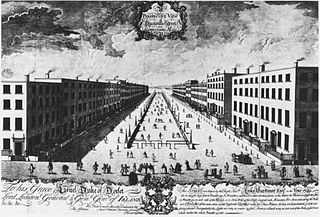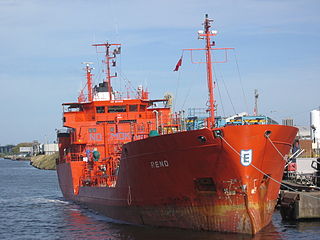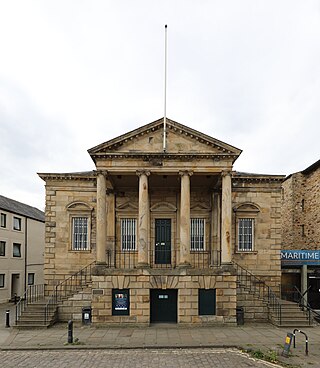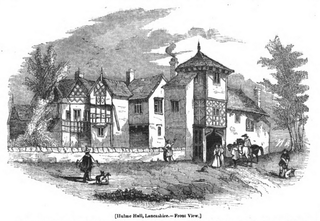Related Research Articles

Lancaster is a city in Lancashire, England and the main cultural hub, economic and commercial centre of City of Lancaster district. The city is on the River Lune and directly inland from Morecambe Bay. Lancaster was the county town of Lancashire until the county council's administrative headquarters moved to Preston in 1974. The city's long history is marked by Lancaster Roman Fort, Lancaster Castle, Lancaster Priory Church, Lancaster Cathedral and the Ashton Memorial. It is the seat of Lancaster University and has a campus of the University of Cumbria. It had a population of 52,234 in the 2011 census compared to the district which had a population of 138,375. The city is an economic hub for the surrounding districts of Ribble Valley and Wyre as well as the Westmorland and Furness unitary area of Cumbria.

The Leeds and Liverpool Canal is a canal in Northern England, linking the cities of Leeds and Liverpool.

Philip Livingston was an American merchant, politician and slave trader from New York City. He represented New York at the October 1774 First Continental Congress, where he favored imposing economic sanctions upon Great Britain as a way of pressuring the British Parliament to repeal the Intolerable Acts. Livingston was also a delegate to the Second Continental Congress from 1775 to 1778, and signed the Declaration of Independence, thus becoming one of the Founding Fathers of the United States.

The Wide Streets Commission was established by an Act of Parliament in 1758, at the request of Dublin Corporation, as a body to govern standards on the layout of streets, bridges, buildings and other architectural considerations in Dublin. The commission was abolished by the Dublin Improvement Act of 1849, with the final meeting of the Commission taking place on 2 January 1851.

The River Lune is a river 53 miles (85 km) in length in Cumbria and Lancashire, England.

Runcorn Docks, originally the Bridgewater Docks, is an inland port on the Manchester Ship Canal in the town of Runcorn, Cheshire, England. It is operated by Peel Ports and handles bulk and project cargo.
Sunderland, commonly known as Sunderland Point, is a small village among the marshes, on a windswept peninsula between the mouth of the River Lune and Morecambe Bay, in the City of Lancaster district of Lancashire, England. It was used as a port for slave ships and cotton ships but its importance declined as other ports such as Lancaster were opened up.

Thomas Grey Egerton, 1st Earl of Wilton, known as Sir Thomas Grey Egerton, Bt from 1766 to 1784, was a British politician who sat in the House of Commons from 1772 to 1784 when he was raised to the peerage as Baron Grey de Wilton.
Events from the year 1703 in Ireland.

Glasson Dock, also known as Glasson, is a village in Lancashire, England, south of Lancaster at the mouth of the River Lune. In 2011, it had a population of around 600.

The Custom House, Lancaster is a grade II* listed building located on St Georges Quay, Lancaster, Lancashire, England. The architect was Richard Gillow of the Gillow furniture making family. Designed in 1764 for the Port Commissioners, it was used for its original purpose until 1882 when the Customs were transferred to Barrow-in-Furness.

Abraham Rawlinson was an English politician and merchant. He came from a prominent Quaker family which traded out of the port of Lancaster. Rawlinson served as one of two Members of Parliament for Lancaster from 1780 to 1790. Abraham Rawlinson was the son of Thomas Hutton Rawlinson (1712–69), a slave trader, and his wife Mary. He took over his father's business in 1756, creating a new company Abraham Rawlinson Junr. & Co. Rawlinson was involved in the importation of mahogany, and in the slave trade.

Dodshon Foster was a merchant who profited from the slave trade. He was involved in the shipping of over 700 slaves during his career. His commercial success was assisted by his connection through marriage to the Birket family of merchants; he married Elizabeth, the daughter of Myles Birket.
Henry Rawlinson (1743–1786) was Member of the Parliament of Great Britain for Liverpool from 1780 to 1784.

Hulme Hall was a manor house adjacent to the River Irwell in Hulme, Manchester, England. A structure of this name existed from at least the time of Henry II (1133–1189) until its demolition around 1840 during development related to the Bridgewater Canal. Owners included the Prestwich and the Mosley baronets prior to the property being bought from George Lloyd in 1764 by Francis Egerton, 3rd Duke of Bridgewater.

The River Lune Navigation Act 1749 is an act of parliament passed by the Parliament of Great Britain. The act recognised the emergence of the Port of Lancaster as a "very considerable" port involved in foreign trade, particularly the slave trade, referred to as the West Indies trade. The act referred to "the great Advancement of the Revenue, and the Improvement of the Trade and Navigation of this Kingdom" that this facilitated.
Thomas Satterthwaite was a prominent Quaker in Lancaster, Lancashire who was involved in the slave trade.
Lancaster, Lancashire, a port city in north-west England, was involved in the transatlantic slave trade. Lancaster's part in the trade developed in the 17th and was linked to that of Liverpool also in north-west England. It became the fourth largest slave-trading centre in England and the most prominent in Lancashire. Lancaster slavers became influential within the city, and also played a role in getting parliamentary support for the development of the Port of Lancaster.
The Port of Lancaster was located at the lowest crossing point on the River Lune and constitutes the central element of maritime Lancaster in north-west England. It dates back to Roman times, but is now based at Glasson Dock.
References
- ↑ "About Us – Lancaster Port Commission". www.lancasterport.org. Lancaster Port Commission. Retrieved 12 May 2021.
- 1 2 Moffitt, Dominic (14 June 2020). "A 2000-year history of slavery across Lancashire". LancsLive. LancsLive. Retrieved 12 May 2021.
- ↑ "History – Lancaster Port Commission". www.lancasterport.org. Lancaster Port Commission. Retrieved 12 May 2021.
- ↑ "River Lune Navigation Act 1749". vLex. Retrieved 12 May 2021.
- ↑ "The Customs House : Lancaster Maritime Museum". Lancashire Past. Lancashire Past. 2 February 2019. Retrieved 12 May 2021.
- ↑ Laurens, Henry (1968). The papers of Henry Laurens. Columbia: South Carolina Historical Society.